Welcome to the world of okra, a versatile and rewarding plant for any gardener!
Known for its unique flavor and texture, okra is not just a staple in Southern cooking but also a delightful addition to gardens across various climates.
As an experienced gardening enthusiast, I’ve come to appreciate okra not only for its culinary uses but also for the distinctive charm it adds to my garden.
Let’s dive into the wonders of growing okra and uncover some tips and tricks to make your okra plants thrive.
Benefits of Growing Okra
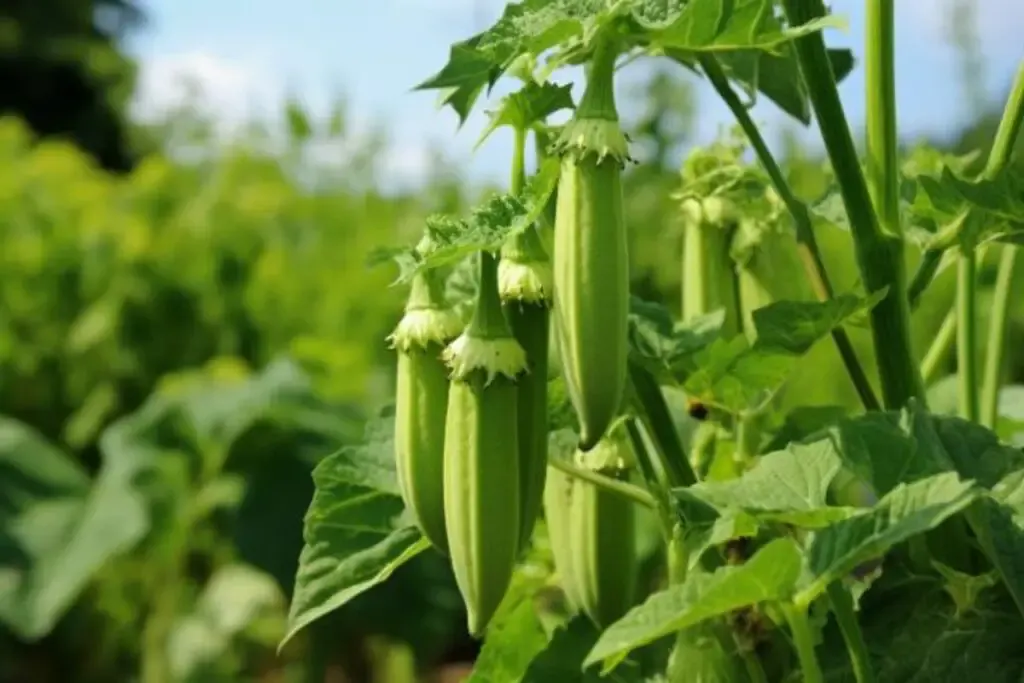
1. Nutritional Powerhouse
One of the most compelling reasons to grow okra is its impressive nutritional profile. Okra is packed with vitamins A and C, fiber, and essential minerals like magnesium and potassium.
It’s low in calories and high in antioxidants, making it a healthy addition to any diet.
2. Heat and Drought Tolerance
For gardeners in warmer climates, okra is a dream plant. It thrives in hot weather and is remarkably drought-resistant once established. This makes okra an excellent choice for areas with high temperatures and limited rainfall.
3. Easy to Grow and Maintain
Okra is relatively low-maintenance, making it a great choice for both novice and experienced gardeners.
It’s resistant to many pests and diseases, and once the plants are established, they require minimal care beyond regular watering and occasional fertilizing.
This ease of care allows gardeners to enjoy a bountiful harvest without extensive gardening knowledge or effort.
My Favorite Okra Varieties
When it comes to choosing okra varieties, the options are abundant, each with its unique traits. Here are three varieties that I’ve grown and loved, for their distinct qualities:
1. Clemson Spineless
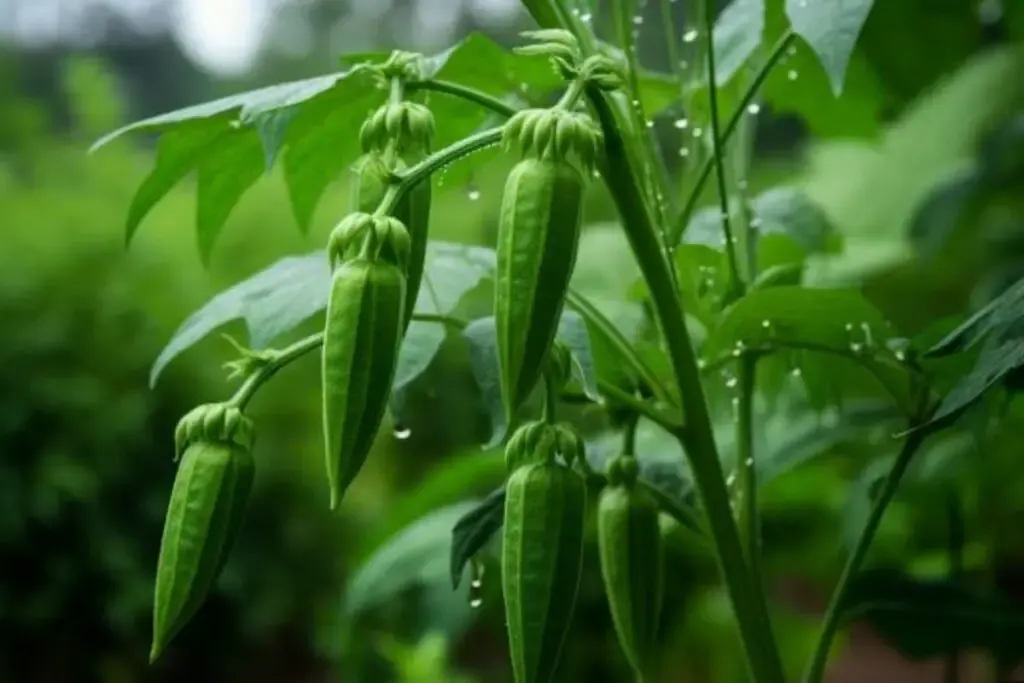
A classic variety, ‘Clemson Spineless’ is my go-to for a reliable and abundant harvest.
It produces tender, spineless pods that are perfect for frying, stewing, or adding to gumbo. Its resilience to pests and diseases makes it a garden favorite.
2. Emerald
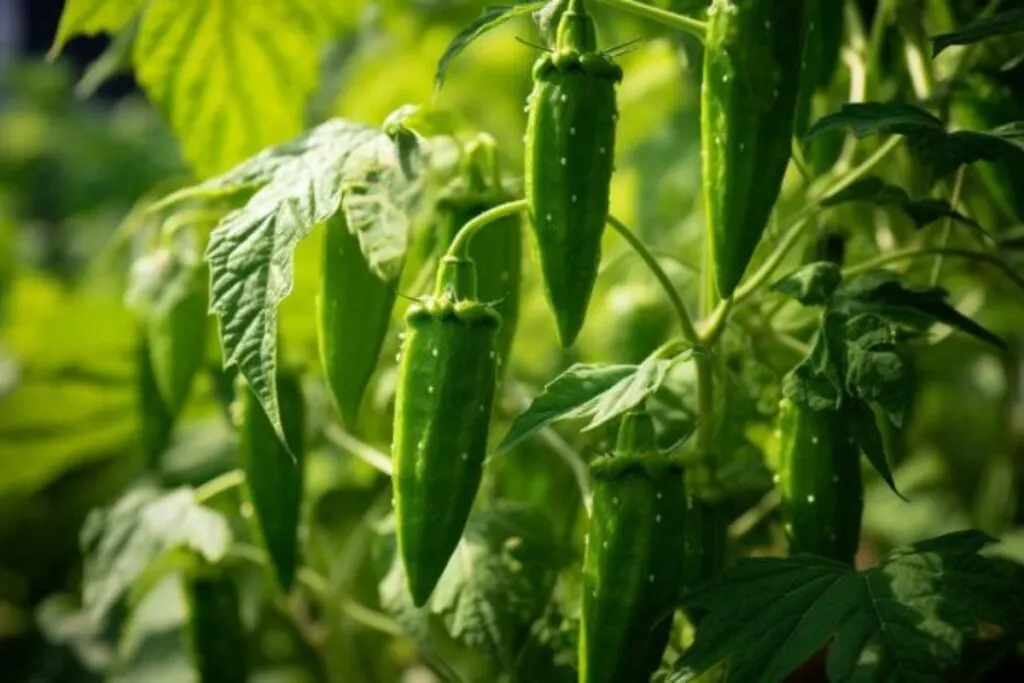
‘Emerald’ okra is known for its smooth, round pods that remain tender even as they grow longer. I love this variety for its consistent texture and flavor, making it ideal for a range of dishes from grills to salads.
3. Burgundy
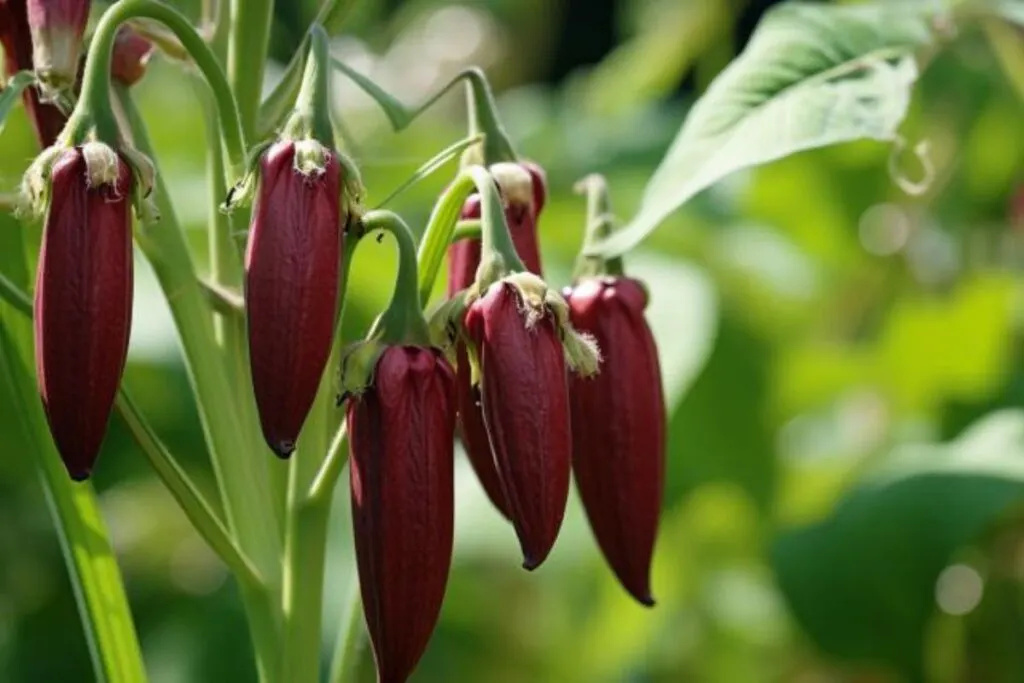
This variety stands out with its striking red pods and beautiful flowers. ‘Burgundy’ okra not only adds a pop of color to your garden but also brings a unique, slightly sweeter taste to your plate.
It’s a real showstopper in any dish where you want to make a visual impact.
Okra Care
Caring for okra involves understanding its specific needs in terms of planting, light, soil, water, temperature, humidity, and fertilization.
By meeting these requirements, you can ensure your okra plants are healthy, productive, and able to produce the best quality pods.
Planting
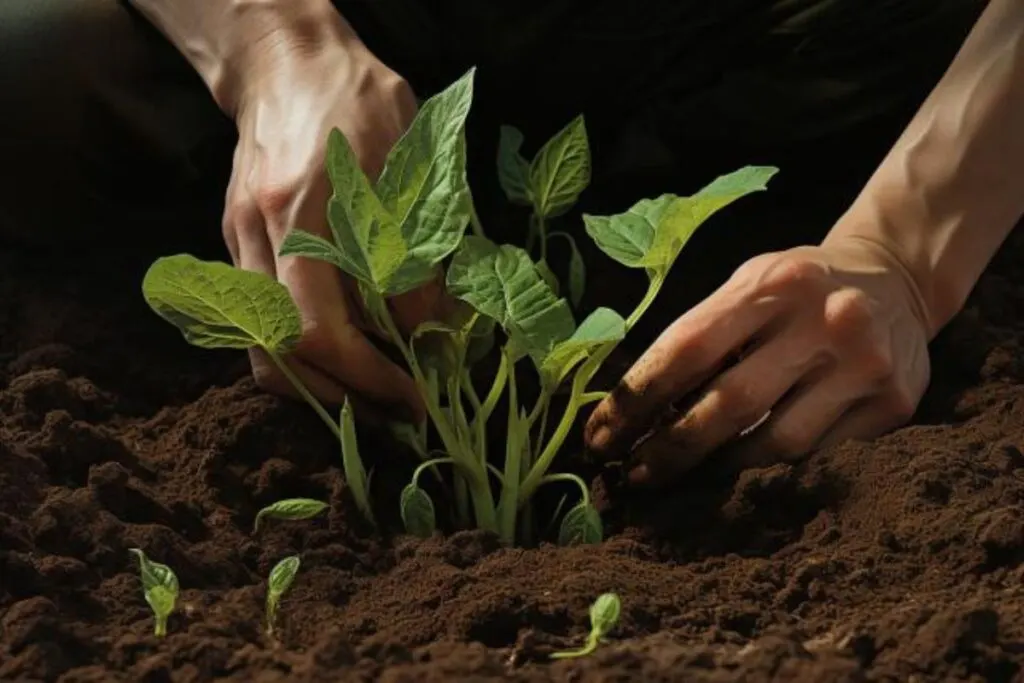
Okra seeds should be planted directly in the garden once the threat of frost has passed and the soil has warmed up.
I recommend planting seeds about 1 inch deep and 12 to 18 inches apart in rows. For best germination, you can soak the seeds overnight before planting.
Okra loves heat, so choosing a sunny spot in your garden is crucial for its growth.
Light
Okra plants thrive in full sunlight. They need at least 6 to 8 hours of direct sun each day to produce well. In my experience, the more sun okra gets, the better it grows and the more pods it produces. So, always pick the sunniest part of your garden for okra.
Soil
Okra prefers well-draining soil with a neutral pH. The ideal soil should be rich in organic matter to provide adequate nutrients.
I often mix in compost or aged manure into the soil before planting to enrich it. Good soil drainage is essential to prevent waterlogging and root rot.
Water
Consistent watering is key to growing okra. The plants need about an inch of water per week, whether from rainfall or irrigation.
I find it best to water deeply once a week, which encourages strong root growth. Avoid overhead watering to reduce the risk of disease.
Temperature and Humidity
Okra is a warm-season crop that grows best in temperatures between 75°F and 90°F. It can tolerate high humidity but performs best in drier conditions. If you live in a cooler climate, consider using black plastic mulch to warm the soil before planting.
Fertilizer
I recommend fertilizing okra plants lightly, as they are not heavy feeders. A balanced, all-purpose fertilizer applied once at planting and again when the plants start flowering should suffice.
Be careful not to over-fertilize, as this can promote leaf growth at the expense of pod production.
Harvesting Okra
Harvesting okra correctly is crucial for both the quality of the pods and the productivity of the plants.
The key is to pick the pods while they are young and tender, usually when they are about 2 to 4 inches long.
At this stage, they are soft and easy to cut. I use a sharp knife or scissors to cut the stem just above the cap of the pod.
Remember, okra grows quickly, so check your plants every other day. Overgrown okra can become tough and fibrous, which isn’t ideal for culinary use.
Pruning
Pruning okra isn’t typically necessary for the health of the plant, but it can help increase yield and ease of harvest.
If the plants become too tall, you can prune the top to encourage bushier growth. Also, removing any yellow or dead leaves regularly helps improve air circulation and overall plant health.
Propagating
Okra is usually grown from seed, but it can also be propagated by root cuttings. To do this, cut a section of the root during the dormant season and plant it in moist soil.
This method is less common, as growing from seed is generally easier and more effective.
How to Grow Okra From Seed
Growing okra from seed is straightforward. Start by soaking the seeds overnight to speed up germination.
Plant the seeds directly in the garden, in well-draining soil, after the last frost when the soil has warmed up. Place seeds 1 inch deep and 12 to 18 inches apart in rows.
Keep the soil moist until the seeds germinate, which typically takes about a week. Thin the seedlings to the strongest plant in each spot.
Growing in Pots
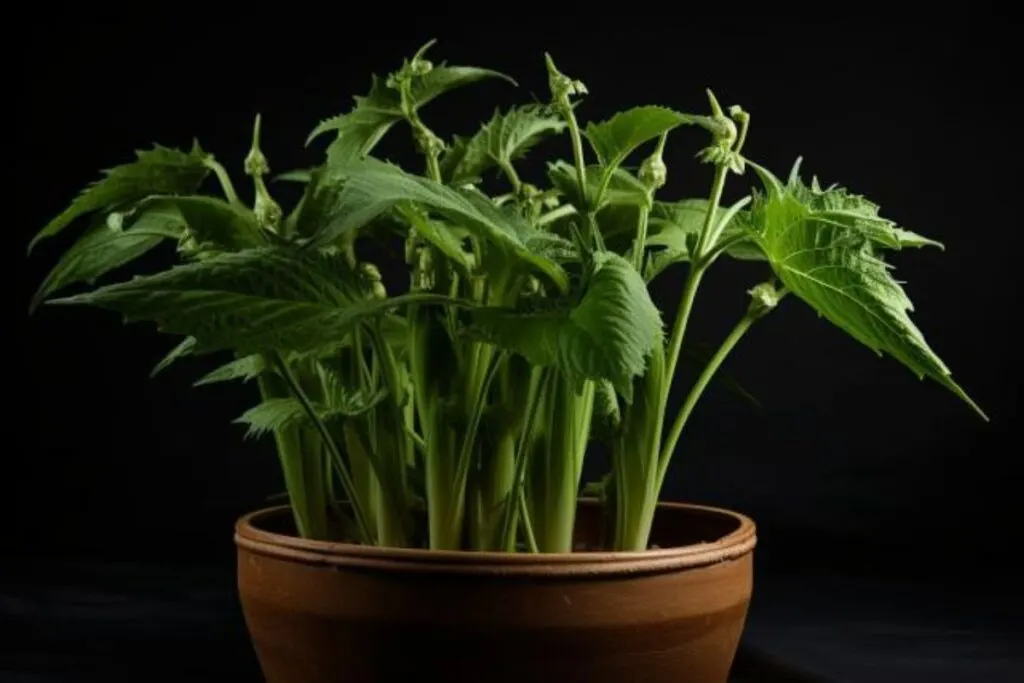
Okra can also be successfully grown in pots, making it accessible for those with limited garden space. Choose a large container (at least 5 gallons) with drainage holes to prevent waterlogging.
Use a high-quality potting mix and ensure the plant receives plenty of sunlight. Water regularly to keep the soil moist and feed with a balanced fertilizer.
With proper care, potted okra can be just as productive as those grown in the ground.
Overwintering
Okra is a warm-season crop and does not tolerate frost. Therefore, overwintering okra in regions with cold winters isn’t practical.
However, if you live in an area with mild winters, you can mulch heavily around the base of the plants to provide some protection against light frosts.
In most cases, it’s best to treat okra as an annual and replant each year.
Transplanting
Transplanting okra should be done with care as the plants do not always respond well to being moved. If you start seeds indoors, use biodegradable pots to minimize root disturbance when transplanting.
Harden off the seedlings by gradually exposing them to outdoor conditions. Transplant them into the garden when the soil is warm and there is no risk of frost, taking care not to disturb the roots.
Common Pests & Diseases
Okra can be affected by pests like aphids, corn earworms, and stink bugs. Aphids can be controlled with a strong jet of water or insecticidal soap.
For earworms and stink bugs, handpicking or the use of appropriate organic pesticides can be effective. Diseases like powdery mildew and fusarium wilt can also occur.
To prevent these, ensure good air circulation around the plants and avoid overhead watering. Rotate your okra crops annually to prevent soil-borne diseases.
Growing okra is a delightful experience, filled with the joys of harvesting your fresh pods and the satisfaction of tending to these beautiful plants.
Whether you’re a seasoned gardener or just starting, okra offers a rewarding journey from seed to harvest. Embrace the challenges, enjoy the process, and most importantly, have fun in your garden!

